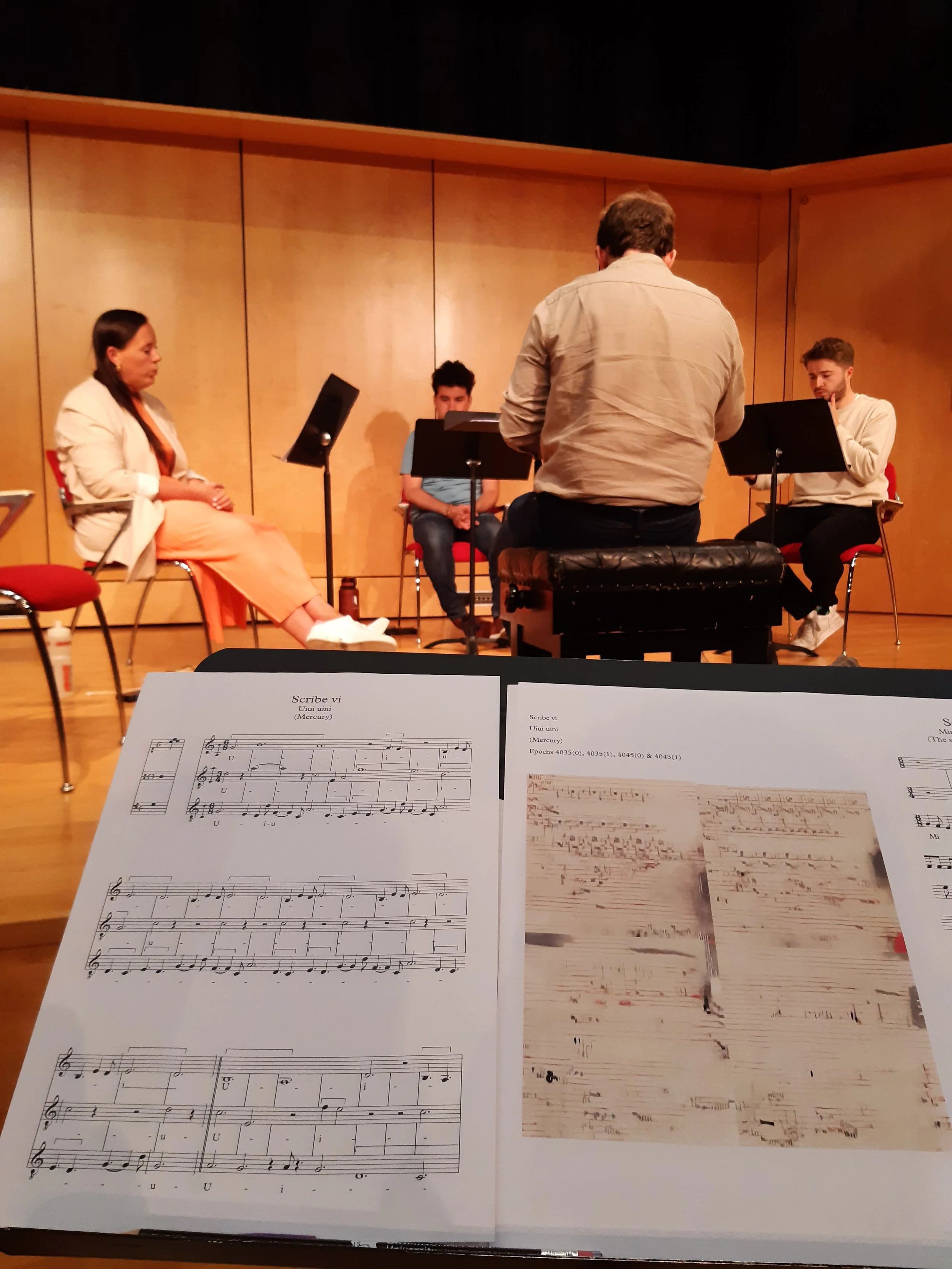Scribe: Fiction as musical practice
by Mark Dyer
In previous blog posts, I described the initial creative processes of Scribe. Firstly, I trained a neural network (a form of machine learning) on pages of the medieval ‘Old Hall’ music manuscript. Secondly, I compiled a fabricated manuscript using the outputs generated by the network, before transcribing the new notation I’d assembled. In doing so, I produced six short movements for three voices.
First workshop with EXAUDI
I then worked with the brilliant EXAUDI vocal ensemble, directed by James Weeks, in the interpretation of these movements.
In the first workshop, I provided performers with the transcribed movements as well as copies of the fabricated manuscript. Together, we questioned how the machine-generated notation might inform their interpretation of the music:
Could the glitchy images inform the vocal timbre?
Might incessantly repeated ligatures hint toward a mechanical phrasing?
How should the ensemble deliver the nonsense text consisting solely of Latin minims (short strokes used to denote the letters i, u, n and m)?
However, whilst exploring these questions, I began to confront my desire for pseudo-authenticity. I wanted the music to plausibly pass as real medieval music (even if only just). As a result, I resisted littering my new scores with interpretive information. Instead, at the suggestion of Weeks, I presented them as early music urtext editions (in which an editor exclusively reproduces the composer’s intentions with minimal amendment).
As well as providing mensural incipits, musica ficta and employing mensurstrich bar lines, I replaced the nonsense text (whose limited phonemes produced a lacklustre, instrumental-like texture when sung) with texts from the Ordinary Mass and various Marian hymns.
Extract from Scribe, bars 1-7 of Sanctus
In the second workshop, I asked performers to interpret the music and texts according to the practice implied by the genre, and compared this with versions from the previous workshop. In addition to the more pointillist consonants, the Latin texts lent the music an uncanny legitimacy. The workshops made me question my own presence as a composer in the public presentation of the music; I credit the music to a fabricated composer, Marcel le Gan (a reference to the GAN neural networked used to generate the manuscript), supposedly working in the late 14th century, retaining for myself the attribution as ‘editor’. Individual movements are titled according to their text (typical to the genre) to further aid the ruse.
The machine-generated manuscript, made by feeding a GAN neural network with digital copies of the Old Hall MS, provided an opportunity for myself, the performers and an audience to engage in a performative fiction. I hope this fiction allows us to consider what we listen for and cherish in similar forms of early music. As a composer routinely engaged in musical borrowing and quotation, this fiction, in which borrowed material is presented as 'authentic', allowed me to indulge in a completely new form of music making and imagination.
Videos of EXAUDI’s performances of the Marian Antiphons and Settings of the Mass by Marcel le Gan, edited by Mark Dyer are now online. Visit our page for Scribe to view them.


